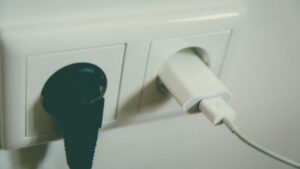Topic
How to Help Someone You Love Quit Vaping

Vaping is a popular activity, especially among young adults and teens, often viewed as a less harmful alternative to traditional smoking. While it’s true that many people find vaping a helpful tool in reducing or quitting smoking, it’s also important to recognize that some individuals may still wish to quit vaping altogether. If someone you love is in this situation, your support can be invaluable in their journey. Here’s a guide to helping them quit vaping while acknowledging its role in harm reduction.
Understanding the Health Risks of Vaping
For many, vaping serves as a tool to reduce or quit smoking, providing a stepping stone towards a smoke-free life.
While vaping is often touted as a less harmful alternative to smoking, vapes contain nicotine, which is highly addictive. The addiction potential is particularly concerning for younger users, as nicotine can impact brain development in adolescents and lead to lifelong dependence. Nicotine exposure during adolescence can affect brain development, impacting attention, learning, and susceptibility to addiction. Despite being marketed as safer than smoking, vaping can create a new generation of nicotine-dependent individuals.
Why Quitting Vaping is Difficult
Vaping, like smoking, involves nicotine addiction, and quitting can be incredibly hard due to the physical, mental, and social factors tied to the habit. These three aspects form a chain of dependence:
- Physical dependence: Nicotine is a powerful, addictive substance that causes the body to crave more, leading to withdrawal symptoms like irritability, anxiety, and difficulty concentrating when the intake is stopped.
- Mental dependence: People often associate vaping with certain activities or moods. For instance, some may vape when stressed, while others might have integrated vaping into their daily routines, such as vaping with their morning coffee.
- Social factors: Vaping can be a social activity, making it harder to quit if friends or co-workers vape or if it’s part of a social scene like parties or gatherings.
To successfully quit, all three aspects need to be addressed. Here’s how you can help your loved one navigate these challenges.
How to Quit Vaping by Lowering Nicotine Strength
Quitting vaping can be a daunting task, but gradually reducing the nicotine strength in your e-liquids is a practical and effective method to ease the transition.
Step 1: Set a Reduction Schedule
- Assess Your Current Use: Start by evaluating your current nicotine level. Identify how many milligrams per milliliter (mg/mL) you are currently using.
- Create a Timeline: Set a realistic timeline for reducing nicotine levels. This could be a month-by-month plan where you decrease the nicotine strength by a specific amount.
- Set Goals: Establish clear milestones to reach lower nicotine levels. Such as from 5%(50mg/ml) nicotine strength to 3%(30mg/ml), 2%(20mg/ml), and 0% nicotine strength month by month. Then you can prepare 5% nicotine-strength disposable vapes, 3% nicotine-strength disposable vapes, 2% nicotine-strength disposable vapes, and nicotine-free disposable vapes in advance if you use disposable vapes.
Step 2: Monitor Your Progress
- Track Your Usage: Keep a journal of your nicotine levels and any symptoms or cravings you experience. This will help you identify patterns and make necessary adjustments.
- Adjust as Needed: If you find a particular reduction challenging, consider maintaining that level a bit longer before lowering it again.
Step 3: Manage Cravings
- Stay Hydrated: Drinking plenty of water can help manage cravings and flush out nicotine.
- Find Distractions: Engage in activities that keep your mind occupied, such as exercise, reading, or hobbies.
- Use Nicotine Alternatives: Consider using nicotine replacement therapies like patches or gum if cravings become intense. Nicotine replacement therapy (NRT): Products like nicotine patches, gum, and lozenges can reduce withdrawal symptoms by delivering small amounts of nicotine without the harmful chemicals found in e-cigarettes.
- Prescription medications: In some cases, doctors may prescribe medications to help with cravings and withdrawal, making the quitting process more manageable.
Step 4: Alternative Coping Strategies
- Practice Stress Reduction: Incorporate stress-relief practices such as meditation, yoga, or deep-breathing exercises into your daily routine.
- Develop Healthy Habits: Replace vaping with healthier habits like going for a walk, cooking, or exploring a new hobby.
- Seek Support: Join support groups or talk to friends and family about your goals. Having a support system can be invaluable.
Step 5: Be Patient and Persistent
- Understand Withdrawal: Recognize that withdrawal symptoms are temporary and will decrease as your body adjusts to lower nicotine levels.
- Celebrate Small Wins: Acknowledge each successful reduction, no matter how small. This will keep you motivated.
- Stay Committed: Remember that setbacks are part of the process. If you slip, don’t be discouraged—refocus and keep moving forward.
Addressing Mental Triggers
The mental dependence on vaping is often linked to emotional triggers and routines. Helping your loved one recognize these triggers and find alternative coping strategies is crucial:
- Identify triggers: Work together to pinpoint what situations, feelings, or activities prompt them to reach for a vape. Is it stress, boredom, or a particular time of day? Once these are identified, they can begin finding ways to manage them without vaping.
- Create healthier habits: Encourage them to develop healthy habits to replace vaping. This might include practicing deep breathing exercises, walking, or engaging in a hobby they enjoy.
- Stress management: Learning to handle stress without relying on nicotine is essential. Suggest activities that promote relaxation, such as meditation, yoga, or journaling, to help them cope with difficult emotions.
By helping your loved one shift their mindset and habits, you can empower them to regain control over their vaping triggers.
Navigating Social Challenges
Vaping can often be a social activity, and quitting can be especially difficult if the person is surrounded by others who vape. Here’s how you can help address the social aspects of quitting:
- Create a vape-free environment: If you share a living space, make it a vape-free zone. Removing reminders or opportunities to vape can reduce the temptation to relapse.
- Encourage positive reinforcement: Regularly celebrate their progress, no matter how small. Positive reinforcement can motivate them to keep going.
- Support in social settings: Help them navigate social situations where vaping might be present. For example, if their friends vape, they offer to do activities that don’t involve vaping, like going for a hike or trying a new restaurant. You can also encourage their friends not to vape around them during the quitting process.
Be Patient and Compassionate
One of the most important things to remember when helping someone quit vaping is to remain patient and compassionate. The journey to quitting is a long distance, and setbacks are common. If your loved one slips and vapes again, don’t criticize or scold them. Instead:
- Remind them of their reasons: Gently remind them why they wanted to quit in the first place—whether for their health, family, or a desire for more control over their life.
- Celebrate progress: Acknowledge how far they’ve come, even if they’ve slipped up. Every step forward is progress, and quitting vaping often requires multiple attempts.
- Encourage trying again: Remind them that a setback doesn’t mean failure. Help them reflect on what led to the slip and how to avoid it next time.
Offer Practical Support
Here are some additional tips to offer practical support during their quitting process:
- Spend time together: Engage in fun, vape-free activities that will keep their mind off cravings. Whether going for a walk, taking a class, or binge-watching a favorite show, staying busy can reduce the urge to vape.
- Ask how you can help: Instead of assuming what they need, ask your loved one how they want to be supported. Some people may want encouragement, while others prefer distraction or simply companionship.
- Help them access resources: There are numerous resources available to help people quit vaping, including counseling services, online support groups, and national quitlines like 1-800-QUIT-NOW. Suggest these tools and help them connect with the right resources.
Conclusion
Helping someone quit vaping is a meaningful but challenging process. By addressing the physical, mental, and social aspects of nicotine addiction and providing support through every step of the journey, you can play a vital role in helping your loved one quit for good. Remember to be patient, compassionate, and positive throughout the process—quitting is hard, but with the proper support, it’s possible.
Topic
Simple Appearance Upgrades That Lift Your Mood

The way we present ourselves plays a significant role in how we feel day to day. Our appearance reflects our personality and impacts our confidence, self-esteem, and mood. When we feel good about how we look, it can influence our posture, social interactions, and even our motivation levels. Boosting your mood through appearance doesn’t have to involve drastic changes or costly makeovers. Simple upgrades, easily incorporated into your daily routine or wardrobe, can make a profound difference. From refreshing your hairstyle to reorganizing your closet, small improvements can foster positivity and a greater sense of self-worth.

Update Your Hairstyle for a Fresh Start
One of the quickest and most effective ways to feel renewed is by changing your hairstyle. Whether it’s a trim, a new color, or a completely different cut, a hairstyle shift can dramatically alter how you view yourself in the mirror. Hair has emotional power. It represents change, reinvention, and control. Visiting a trusted stylist can be a self-care ritual that boosts mental well-being. Even simpler changes like trying a new part, adding texture, or styling with a fresh accessory can lift your look and your spirits. When your reflection feels more aligned with how you want to feel, your confidence naturally improves.
Enhance Your Skincare Routine
Taking care of your skin is one of the simplest ways to boost your confidence and lift your mood. A consistent skincare routine tailored to your needs can improve your complexion’s health and glow, making you feel refreshed and radiant every day. Beyond cleansers and moisturizers, some choose to enhance their natural beauty with subtle cosmetic options like lip fillers. When done thoughtfully, experts from https://drscottallison.com.au/lip-filler/ explain, lip fillers can add gentle volume and definition, creating a youthful and balanced look that complements your appearance. This small enhancement often provides a positive emotional boost, helping you feel more confident and comfortable in your skin.
Reorganize and Refresh Your Wardrobe
Our clothes are more than just fabric; they’re an extension of our identity. Sorting through your wardrobe to eliminate items that no longer fit, feel comfortable, or match your style can be a surprisingly freeing experience. By curating a closet of pieces you love and feel great in, you create a daily opportunity to start the morning on a positive note. Consider introducing a few new staples, such as a flattering jacket, a pair of well-fitted jeans, or a vibrant scarf, to inject life into your outfits. Even color choice affects mood; wearing bright or soothing hues can uplift your emotional state and communicate energy or calmness to those around you.
Accessorize with Intention
Accessories can transform an otherwise plain outfit and provide a sense of uniqueness and polish. Choosing items that reflect your personality, such as statement earrings, a favorite watch, or a meaningful necklace, can offer a boost of joy every time you put them on. Accessories allow you to express creativity without changing your entire wardrobe. Even something as simple as a new handbag, belt, or pair of sunglasses can spark a sense of excitement. Intentional accessorizing helps you feel more put-together and can serve as a small yet impactful mood elevator, particularly when you receive compliments or notice your sparkle in a mirror.
Upgrade Your Posture and Body Language
While not an external item like clothing or makeup, your posture and body language significantly influence your appearance and how you feel. Standing tall, walking with purpose, and maintaining an open, relaxed posture can project confidence and positively impact your mood. Simple posture improvements, such as pulling back your shoulders or keeping your chin up, can create the psychological feedback loop of feeling stronger and more in control. Practicing yoga, stretching, or using a posture-correcting aid can support long-term improvement in how you carry yourself. This improves your presence and reinforces an internal feeling of well-being and empowerment.
Introduce a Signature Scent
Scent is a powerful trigger for emotions and memories. Wearing a fragrance that you love can become a mood-lifting ritual, setting the tone for your day. Whether it’s a light floral perfume, a fresh citrus body spray, or a calming essential oil blend, a pleasing scent can provide comfort and confidence. Choosing a signature scent adds a layer of intentionality to your appearance, giving you something special that’s uniquely yours. It’s a subtle yet sensory upgrade that can make you feel more refined, energized, or relaxed, depending on the aroma you choose. Simply put, smelling good can make you feel good, and others will notice it, too.

Feeling good about how you look doesn’t require an extreme makeover or a high-end wardrobe. Simple, thoughtful appearance upgrades can yield big returns in how you feel emotionally and mentally. Whether it’s through grooming habits, wardrobe updates, posture improvements, or scent selection, taking control of your presentation is an empowering way to nurture your inner well-being. By incorporating a few small changes, you can elevate your appearance and your outlook on life.
Topic
How Emergency Standby Power Keeps Critical Systems Running During Outages

Power outages can strike without warning, disrupting homes, businesses, and critical infrastructure. Whether caused by storms, equipment failure, grid overload, or maintenance issues, these outages can lead to substantial financial losses, safety hazards, and operational setbacks. For facilities that rely heavily on continuous electrical power, such as hospitals, data centers, manufacturing plants, and emergency response centers, losing electricity for even a few seconds can have severe consequences.
Emergency standby power systems provide a lifeline in these situations. Designed to automatically supply electricity when the primary power source fails, these systems ensure that important equipment and services remain operational. They prevent business disruption and protect lives, data, and assets in environments where downtime is simply not an option.

The Role of Standby Generators in Power Continuity
At the heart of most emergency standby power systems is a standby generator. These generators are designed to automatically start when an outage is detected and provide power until utility service is restored. Unlike portable generators that require manual activation and limited capacity, standby generators are permanently installed and integrated into a building’s electrical system.
They are typically fueled by diesel, natural gas, or propane, and are capable of powering entire facilities or designated circuits depending on the system design. When properly sized and maintained, standby generators can run for hours, or even days, without interruption.
What makes them truly valuable is their ability to engage automatically and seamlessly. The moment a disruption is sensed, the system reacts within seconds to restore power, ensuring minimal downtime and no manual intervention during a crisis.
Why Transfer Switches Are Important
A critical component of any standby power system is the transfer switch. This device detects a failure in the utility power and shifts the electrical load to the generator. Once utility power is restored, the switch transfers the load back, allowing the generator to shut down safely. Facilities looking to streamline this process often search for automatic transfer switches for sale to upgrade their emergency systems with faster and more reliable switching capabilities. These switches are crucial in maintaining uninterrupted service in high-stakes environments like healthcare facilities or emergency response centers.
Automatic transfer switches work by constantly monitoring voltage from the utility line. When a drop or loss is detected, the switch initiates generator startup and transitions power to the standby source. Once normal service resumes, the switch completes the transfer back and signals the generator to cool down and shut off. This sequence happens without human input, eliminating delays and reducing risk.
Applications That Depend on Standby Power
While most buildings benefit from some level of backup power, certain sectors absolutely require it. Hospitals and healthcare clinics use standby systems to keep life-saving equipment functioning during grid failures. Critical functions such as ventilators, monitors, electronic records, and surgical instruments cannot afford even brief interruptions.
Data centers depend on uninterrupted power to prevent data corruption, service downtime, and network instability. Many modern business operations, from e-commerce to cloud storage, rely on real-time data availability and uptime guarantees. For these organizations, power continuity is not a luxury, it’s a contractual and operational requirement.
Manufacturing plants use standby power to keep machinery running and protect sensitive production lines from abrupt halts that can cause quality issues or equipment damage. Cold storage facilities use it to preserve inventory, while communication centers use it to maintain connections during emergencies.
System Design and Customization
The effectiveness of a standby power solution depends heavily on how well it’s designed for the specific needs of the facility. A thorough assessment is necessary to determine which systems and circuits require backup, how much power is needed, and what kind of generator and transfer switch will best serve the environment.
Some facilities require whole-building coverage, while others may only need to power critical systems like emergency lighting, refrigeration, or IT infrastructure. The size and fuel source of the generator must align with usage patterns and runtime expectations. The location of the generator must meet ventilation, accessibility, and noise regulations.
Customization ensures efficiency and cost-effectiveness. Over-sizing a system leads to unnecessary expenses, while under-sizing can result in power failures during high-demand periods. Professional installation and consultation are key to ensuring that the standby system performs reliably when it’s needed most.
Maintenance and Testing
Installing an emergency standby power system is only the first step. Ongoing maintenance and periodic testing are key to ensure the system will operate correctly in the event of an outage. Generators should be inspected regularly for fuel levels, oil quality, battery charge, and coolant condition. Transfer switches should be tested to confirm proper functionality and response times.
Most industry standards recommend monthly testing, including full-load tests under simulated outage conditions. This verifies that the generator will start and sustain the load and exercises the system to keep components in working condition.
Failing to maintain the system increases the risk of failure during a real emergency. Scheduled inspections, service contracts, and record-keeping contribute to the longevity and dependability of the equipment.
Compliance and Regulatory Considerations
Standby power systems must comply with national and local codes when used in regulated industries. Healthcare facilities are subject to guidelines from organizations such as the National Fire Protection Association (NFPA), which mandates testing intervals, load requirements, and installation protocols.
Building codes may dictate where and how equipment can be installed, particularly in terms of noise levels, emissions, and proximity to flammable materials. Non-compliance can lead to fines, delays in permitting, or insurance complications.
Businesses should work with knowledgeable installers and consultants who understand these regulations and can design systems that meet both operational and legal standards.
Future Trends in Standby Power
Technology in the standby power space continues to evolve. Hybrid systems that integrate battery storage with traditional generators are gaining traction for their ability to bridge the gap between power loss and generator startup. Smart monitoring systems now allow for real-time diagnostics, remote testing, and predictive maintenance.
Sustainability is becoming a greater focus. Advances in clean energy generators, such as those powered by hydrogen or renewable biodiesel, offer environmentally responsible alternatives without compromising reliability.
As demand for uninterrupted service grows, so does the innovation around how we provide and manage backup power. These advancements promise greater efficiency, faster response, and reduced environmental impact, all while keeping critical systems online during power disruptions.

Emergency standby power is more than a safety net, it’s an operational necessity for many industries. By providing immediate, reliable power during outages, these systems prevent costly downtime, protect crucial functions, and ensure business continuity when it matters most. Through careful planning, proper equipment selection, and regular maintenance, businesses can safeguard their infrastructure and people against the risks of power failure. Whether it’s for healthcare, data protection, manufacturing, or public safety, a well-designed standby system is one of the smartest investments an organization can make.
Topic
Dealing with a Persistent Pest Issue? Here’s What You Need to Do

There is only one thing worse than discovering a pest infestation in your home, and that’s discovering that the pest Pest Issue infestation is still there after you have already taken pest control measures.
By their nature, pests are resilient. If they found a good breeding ground in your home, they will come back, especially if the pest control method you used to get rid of them wasn’t thorough enough.
That doesn’t mean you have to despair. If you have a recurring pest infestation, here are a few important steps you can take to make your property critter-free once and for all.
Hire a Professional Exterminator

If you’ve been trying to manage your pest issues on your own, it’s time to hire a professional exterminator. For persistent pest infestations, DIY solutions or products that you can buy at the local hardware store usually aren’t strong enough to make a difference.
Look for exterminators that are proven to provide lasting solutions to pest control issues. The team at North Fulton Pest Solutions, for instance, has been serving the Atlanta area for more than 50 years, which means they have plenty of experience with all kinds of infestations. Look for positive reviews or ask your neighbors for recommendations.
For persistent pest infestations, you may need multiple visits from an exterminator. Talk with the professionals you hire and make sure that they are transparent about their plans and how much it will cost.
Get Rid of Their Habitats

When pests keep coming back to a home, usually it’s because they found something there that they like. Go through your home and property to find potential habitats and sources of food that may be attracting pests. A professional exterminator can also help you analyze your property to find potential pest breeding grounds.
Throw out any clutter such as old newspapers, junk, or garbage bags, especially in out-of-the-way spaces like crawlspaces and attics. Clutter provides pests with a nesting ground. It can even be a source of food.
Standing water is another attraction for pests, especially mosquitoes and other bugs. Get rid of pools or places where puddles form when it rains. Go over your plumbing to find any hidden leaks that may be attracting pests.
Make Sure They Can’t Come In
There’s no point in making your home unwelcoming to pests if you’re unwittingly inviting them in. Go over your home and identify places where pests can get inside, such as cracks, open windows, or crawlspaces.
Seal off any potential entrance points for pests. That way, once you redo your pest control treatment, they won’t be able to come back.
Finding Pest Control Solutions That Last
Persistent pest infestations are the nightmare of every homeowner, but you can manage them with the right help. Make sure that your home is inhospitable to pests by getting rid of their habitats, food sources, and points of entry. That way, you can prevent future infestations.
To get rid of persistent infestations, you need help from a professional exterminator. They can provide treatments that remove long-lasting pest colonies and advise you on ways to prevent future infestations. It may take multiple visits, but a good exterminator will help you get rid of pests once and for all.

 Cartoon1 year ago
Cartoon1 year agoUnlocking the Potential of Nekopoi.care: A Comprehensive Guide

 Game1 year ago
Game1 year agoExploring Aopickleballthietke.com: Your Ultimate Pickleball Destination

 BUSINESS1 year ago
BUSINESS1 year agoWhat Companies Are In The Consumer Services Field

 BUSINESS1 year ago
BUSINESS1 year agoUnraveling the Mystery of 405 Howard Street San Francisco charge on Credit Card

 HOME IMPROVEMENT1 year ago
HOME IMPROVEMENT1 year agoVtrahe vs. Other Platforms: Which One Reigns Supreme?

 TECHNOLOGY1 year ago
TECHNOLOGY1 year agoThe Guide to Using Anon Vault for Secure Data Storage

 ENTERTAINMENT11 months ago
ENTERTAINMENT11 months agoUnderstanding Bunkr Album: A Comprehensive Guide

 ENTERTAINMENT1 year ago
ENTERTAINMENT1 year agoThe Epic Return: Revenge of the Iron-Blooded Sword Hound
















